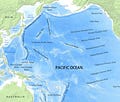In an incredibly important ... and silly drama over the last couple of years, some otherwise smart people in objectively important positions invested significant amounts of personal and professional capital trying to make an argument that the US Army - our land component, is the primary service ... here.
No.
Unless you want to get in to another land war in Asia from the Pacific approaches ... no.
However, we have friends who share our concerns with the People's Republic of China who, in addition to having four times the USA's population, have significant land borders and territorial issues with the PRC.
In a larger war, they may find themselves allied with us, and there are things we could do to help them on their front. To do it best, we need to know each other better and the environment we might find ourselves fighting alongside them.
This is something the US Army needs to be thinking about and growing their expertise in ... not the Pacific approaches;
...U.S. Army Alaska’s bilateral exercise with the Indian Army, dubbed Yudh Abhyas, drew to a close Friday after two weeks of cold weather warfare training...Roughly 350 Indian soldiers from 7th Battalion, Madras Regiment, participated in the exercise alongside Alaska-based U.S. paratroopers. The Indian forces may mostly originate from southern India, but they work in the Himalayas, where Indian and Chinese forces have brawled over border disputes in recent months....“There are no higher, nor more remote, mountains than the Himalayas, and that kind of subject matter expertise is going to make our Paratroopers that much more capable in Arctic warfare,” U.S. Army Col. Jody Shouse said of the Indian soldiers and the skills they brought to the exercise.
Shouse commands 4th Infantry Brigade, 25th Infantry Division, which worked with the Indian forces this year. The Indian unit — nicknamed “Shandaar Saath,” which means “Magnificent Seven” — was led by Indian Army Brigadier Parag Nangare.
...
The field training also involved cold weather and high altitude skill development in mountaineering and snow survival, medical evacuations and small arms firing.
“There are certain peculiar conditions which are specific to high altitudes, especially those that affect men and materials,” Nangare said. “Guns and other equipment face a lot of maintenance issues. Range calibration is a challenge and vehicles also face problems both during operations and repair.”
Good.
More of this.





So if I read this right, we're basically talking about training Army Airborne units to fight in the Himalayas.
What was that you were saying about fighting a land war in Asia?